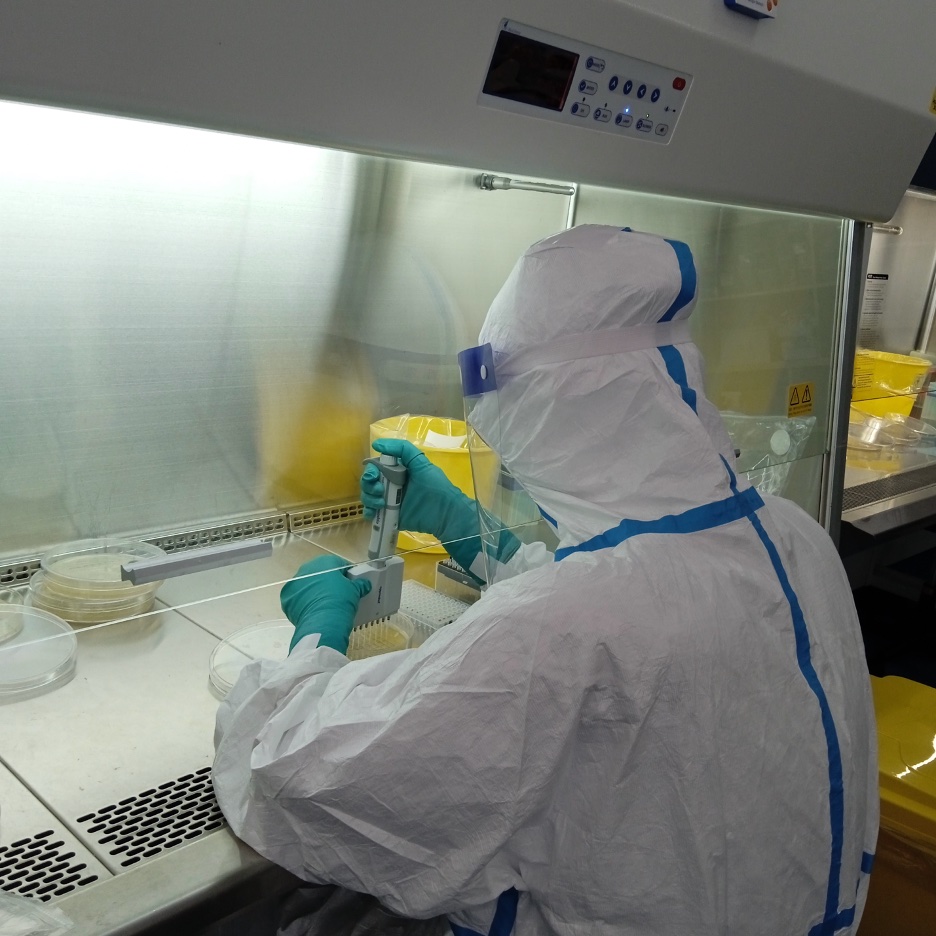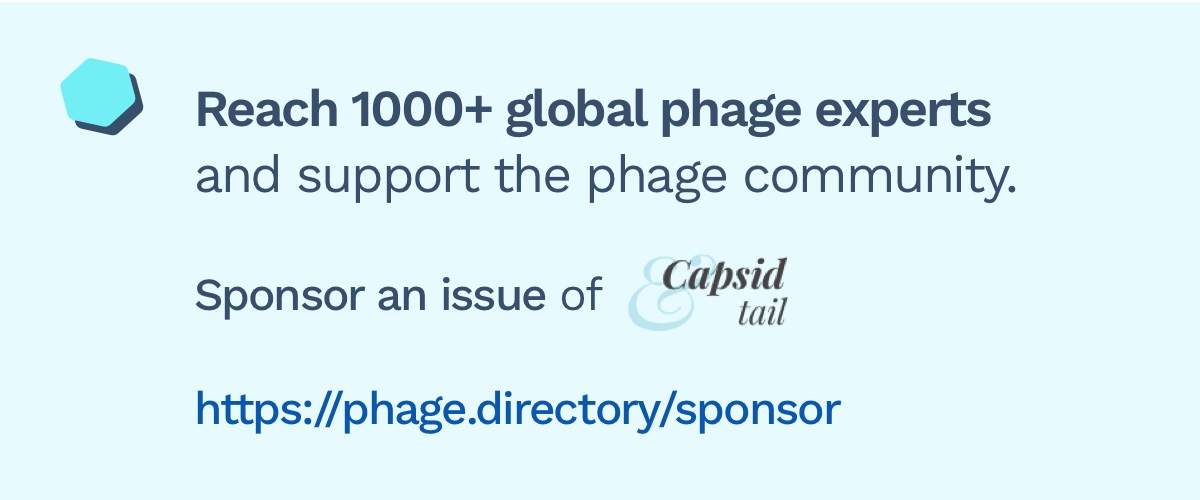Summary
While most people solely blame the physiological damage and the number of deaths attributed to COVID-19 pandemic, they neglect another critical complication, the secondary bacterial infection (SBI). As the many new COVID-19 variants such as Omicron cause milder impacts, the SBI is perhaps tougher to deal with than the virus itself because those bacteria that the patients commonly acquired from hospitals are often resistant to antibiotics, our traditional mean to treat bacterial infection. However, following some clinical studies and analysis, some foresighted researchers found that phage therapy, which in fact appeared before antibiotics but received way less attention in the western world, may be a potential solution to contain COVID-19 related SBI.
The Impact of COVID-19
The sudden outbreak of COVID-19 from the end of 2019 caused significant impacts on people’s lives, and how the world functions has greatly changed since then. While the pandemic has kept tens of millions of people at home working remotely and obstructed communications between countries, its direct impact on the clinical field can be lethal. Up to July 2022, more than 550 million people caught COVID-19, and the disease caused more than 6 million deaths. What lays behind these terrifying numbers are countless broken families.
The Patients’ Opponent Besides COVD-19 Itself
If we dive into how COVID-19 affects its victims, we will find that it mainly harms the patients by destroying their respiratory systems by inducing pneumonia and flooding air sacs in lungs. This is exactly why the virus is formally called SARS-CoV-2, which stands for severe acute respiratory syndrome coronavirus 2. However, are the respiratory issues induced by COVID-19 directly the sole cause of the deaths? The answer is often no. What also contributes to the high mortality number is the SBI following the virus’s vicious attack to our immune system. The quote “If grippe condemns, the secondary infections execute” from Louis Cruveilheir in 1919 reveals the relationship between flu and its related SBI during the Spanish flu pandemic in the “pre-antibiotic era”. Similarly, it applies to COVID-19 and its related SBI as well in the “post-antibiotic era”.
Like how real wars turn battlefields to ruins, the war between our immune system and COVID-19 produces a lot of debris. These debris in our body will then culture bacteria. The bacteria will further trigger the cascade in our immune system to produce more inflammatory materials, which will yield more debris when countering the virus and the bacteria. A vicious cycle thus forms. Therefore, COVID-19 patients not only need to deal with the virus, but also to fight the SBI. To prevent and cope with SBI, clinics prescribe antibiotics to approximately 70% of COVID-19 patients in the world. However, if you are aware of the popular topics in the medical field today, you will probably connect this circumstance to the widely discussed antibiotic resistance crisis.
Antibiotic Resistance Crisis and the Potential Remedy
In the current studies in COVID-19 related SBI, scientists have found harmful strains such as Acinetobacter baumannii, Klebsiella pneumoniae, and Pseudomonas aeruginosa in the COVID-19 patients. These are all bacteria that commonly develop resistance to a variety of antibiotics and post life-threatening challenges to the patients. Thus, in hope to find a remedy to address these superbug infections, researchers have relocated their sights on phage therapy.
Phage therapy has been widely used in the former U.S.S.R countries to target bacterial infection for a long time. In addition to its ability to circumvent the antibiotic resistance issue, it even has more advantages over antibiotics. Most importantly, phages kill bacteria with a high specificity, so adopting phage therapy also avoids killing the benign microbiome in the human body like what traditional antibiotics would do. The innate mechanism of phages in killing bacteria seems to be a natural gift for us. In short, a representative lytic cycle of phages killing bacteria can be divided into 4 steps. (1) Phages attach to bacteria with high specificities; (2) Phages insert their genetic materials into the bacteria; (3) Phages replicate in the bacteria; (4) Phages induce cell lysis of the bacteria and get released to infect other target bacterial cells.

Fig 1. The process of phage infecting bacteria
The Studies in Using Phage to Counter COVID-19 Related SBI
1. Clinical Practices
In early 2020 in Shanghai, Wu et al. conducted the first case-series study using phage therapy against COVID-19 induced SBI after failing of antibiotics treatments. The clinical study included four critically ill patients with COVID-19, with the age range from 62-81, who suffered from secondary carbapenem-resistant A. baumannii (CRAB) infection. The study used spot assays to select phage ɸAb124 as the treatment. Also, next evolution phage-typing was performed to preview the potential anti-phage-resistance that CRAB may develop. As a result, the researchers decided to use a phage cocktail (2ɸ), adding ɸAb121 as the second-line therapeutic phage in the study. To analyze the effect of the treatment, the researchers observed the CRAB load and bacterial anti-phage resistance as the primary indicator. In addition, the patients’ clinical status was measured as the secondary indicator. After the treatment, patients 1 and 2 were evacuated of invasive ventilator and were discharged from hospital. Patients 3 and 4 also demonstrated improvement on primary and/or secondary indicators, but they died from other subsequent complications. Patient 1 showed a side effect of temporary atypical cytokine storm. The study illustrates the promising potential of using phage therapy to treat COVID-19 related SBI.
In addition, researchers from other countries are doing similar studies. For instance, Adaptive Phage Therapeutics, Inc. from the U.S. has started a clinical trial using phage therapy to treat bacterial co-infections caused by A. baumannii, P. aeruginosa, or S. aureus in COVID-19 patients from September 2020. While the result of the trial has not been posted yet following the last update on December 21, 2021, such research will for sure give us more insights to the application of phage therapy on the SBI in COVID-19 patients.
2. Bottlenecks and Countermeasures
Despite the clinical study in Shanghai demonstrated promising potential using phage therapy to target COVID-19 related SBI, we must admit that this treatment faces many challenges. Firstly, due to the phage’s non-motile characteristic, a clear drug delivery pathway needs to be designed for phage administration. However, COVID-19 may affect the pathway by inducing airway blockage and thrombus formation. Consequently, the administered phage may not successfully arrive at the infection loci. Secondly, while phage may interact with our immune system to create a synergy, COVID-19 may disturb the regular immune signaling process and deplete immune cells in the infection loci. Thirdly, since COVID-19 is highly contagious while requiring a high biosafety level management, the related phage preparation such as pathogen isolation and phage screening can be exceptionally complicated.
However, based on rich experience working with phage and serving as pioneer in researching COVID-19 related SBI, the Shanghai Institute of Phage (SIP) came up with potential solutions to overcome those bottlenecks mentioned above. SIP has been increasing the phage vials that target common hospital pathogens in its phage bank to be able to rapidly conduct phage therapy in COVID-19 patients with serious and urgent conditions. SIP also designed a workflow that compartmentalizes the work in phage therapy with different levels of personal protective equipment into 5 sections (Fig 2 adapted from Curr Opin Viral). This makes the process of administering phage therapy practicable and more efficient. Furthermore, SIP seeks to improve the efficacy of phage therapy by conducting in vitro experiments. For instance, an in vitro experiment can be performed to preview the bacteria’s potential to develop phage-resistance and design phage cocktails to counteract the phage-resistance ahead of time. With these quickly improving countermeasures against the bottlenecks in phage therapy, we may eventually trust and rely on this century-old therapy that had been neglected before.

Fig 2. The compartmentalization of workflow of phage therapy based on different levels of personal protective equipment. Source: https://www.sciencedirect.com/science/article/pii/S1879625721001358
3. Perspectives
Dr. Marcin W. Wojewodzic from Norwegian Institute of Public Health studied the potential of phages serving as an alternative to antibiotics in treating COVID-19 related SBI. He suggested that phages can be delivered in an aerosol manner to kill the bacteria and slow down the rapid bacterial growth rate. The central idea in this strategy is to establish an ecological prey-predator relationship between bacteria and phages. While bacteria grow at an exponential rate that severely damages the patients’ respiratory system, phages can grow similarly in a self-regulatory manner to quickly destroy the bacteria community. Phage cocktail can also be applied to target multi-bacterial infection when needed. In fact, there is already previous evidence showing that nebulized phages may cure respiratory illness like COVID-19.
Worth mentioning, Dr. Wojewodzic also discussed the possibility of using phages to directly target COVID-19 itself rather than targeting the COVID-19 related SBI. This strategy is known as phage display, in which phage is used more like a supportive tool rather than a weapon. Using phage display, phages applied to the patients allow the patients to rapidly produce recombinant antibodies. These synthetic antibodies may be particularly effective against COVID-19.
Conclusion In regard of COVID-19 related discussion, most people have only paid attention to the number of people who died from COVID-19, but what’s also important is the complications that COVID-19 brings, to which the petrifying number can be greatly attributed. The COVID-19 related SBI secretly harvests the patients’ lives behind the scenes, and in the antibiotic crisis era, it is urgent to seek for an alternative. Phage therapy, whose efficacy in countering bacterial infection has been proved in many previous clinical studies and COVID-19 related case studies today, may be a remedy to the current issue. Although there are some bottlenecks in phage therapy, researchers are actively addressing them through different countermeasures. Indeed, more research on phage therapy needs to be established to make this therapy more reliable and efficient, but it has undoubtful potential to save COVID-19 patients from the attack of SBI.
Sources:
https://COVID-1919.who.int/
https://www.frontiersin.org/articles/10.3389/fmicb.2020.01434/full
https://www.ncbi.nlm.nih.gov/pmc/articles/PMC2599911/
https://www.liebertpub.com/doi/10.1089/PHAGE.2020.0014
https://www.sciencedirect.com/science/article/pii/S1879625721001358
https://www.sciencedirect.com/science/article/pii/S2666517422000128
https://pubmed.ncbi.nlm.nih.gov/33703996/









